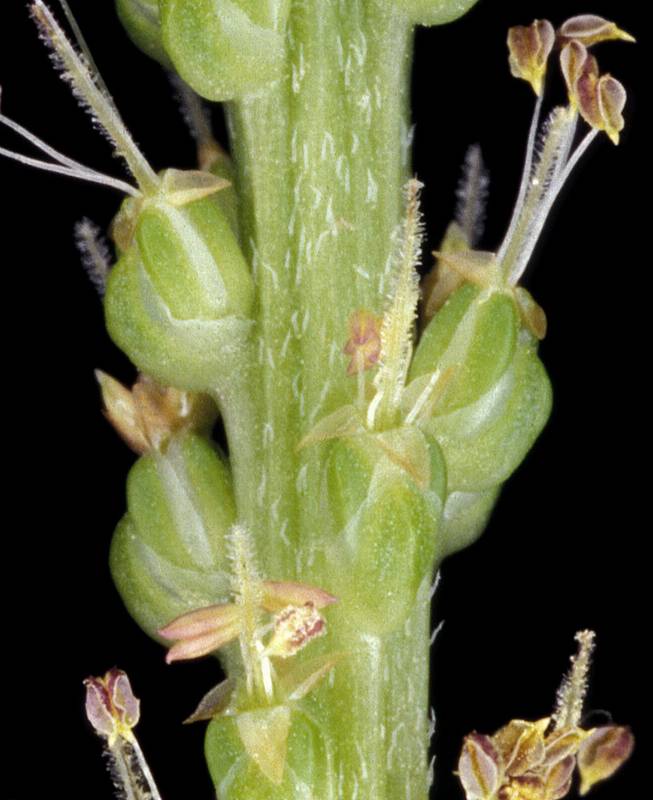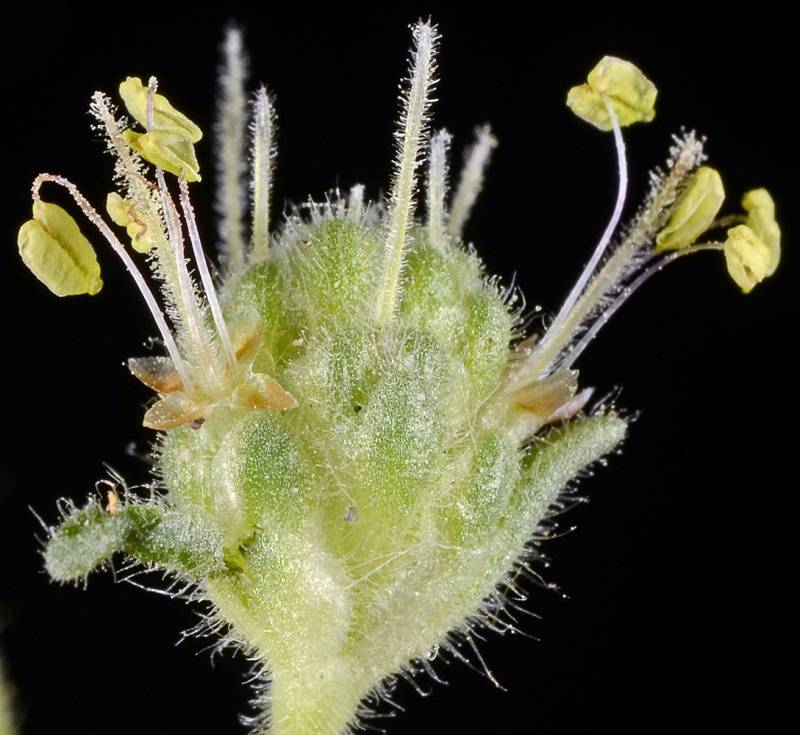Plantago major
Plantago arenaria
nippleseed, common plantain, great plantain
sand plantain
Leaves all basal, the broadly elliptic to broadly ovate blade contracted abruptly to the petiole, entire or irregularly toothed, 4-18 cm. long and 2.5-11 cm. wide, strongly 3- to several-nerved.
Inflorescence a dense, bracteate, narrow spike, 5-30 cm. long, glabrous;
bracts broad, thin-margined, 2-4 mm. long;
calyx 4-lobed; 4 corolla lobes 1 mm. long, reflexed;
stamens 4, exerted;
ovary superior, 2-celled.
Capsule 2.5-4 mm. long.
Plantago major
Plantago arenaria
Occurring on both sides of the Cascades crest in Washington; Alaska to California, east across North America to the Atlantic Coast.
Occurring west of the Cascades crest in lowland southwestern Washington; British Columbia to California, also in Idaho and central and eastern North America.
- Local floras:
BC,
CA,
OR,
WA
- Local Web sites:
CalFlora,
CalPhotos,
Flora NW,
PNW Herbaria,
Turner Photog.
WildflowerSearch
iNaturalist (observations)
USDA Plants Database
- LBJ Wildflower Center
- SEINet
- Plants of the World Online
- Encyclopedia of Life
- Wikipedia
- Google Image Search
- Local floras:
CA,
OR,
WA
- Local Web sites:
CalFlora,
CalPhotos,
Flora NW,
PNW Herbaria
WildflowerSearch
iNaturalist (observations)
USDA Plants Database
- LBJ Wildflower Center
- SEINet
- Plants of the World Online
- Encyclopedia of Life
- Wikipedia
- Google Image Search



